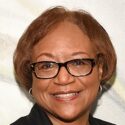 The Center for Scholastic Journalism at Kent State University conducted a survey of media outlets at more than 1,000 high schools in all 50 states and the District of Columbia. The survey found that 94 percent of high schools had yearbooks, 64 percent had newspapers, 19 percent had television programs, and 3 percent had radio programs. Some 33 percent of high schools had some online media component.
The Center for Scholastic Journalism at Kent State University conducted a survey of media outlets at more than 1,000 high schools in all 50 states and the District of Columbia. The survey found that 94 percent of high schools had yearbooks, 64 percent had newspapers, 19 percent had television programs, and 3 percent had radio programs. Some 33 percent of high schools had some online media component.
The survey found that schools that had no media outlets for students had a large percentage of low-income or minority students. The schools that had no media for students had an average student body where minorities made up 56 percent of the student body.
The full report may be downloaded here.












